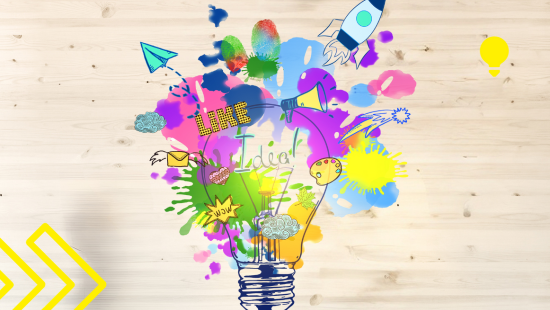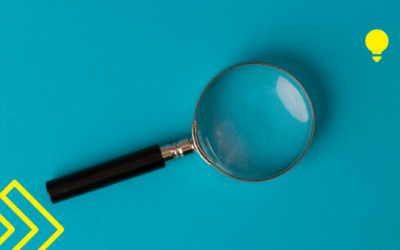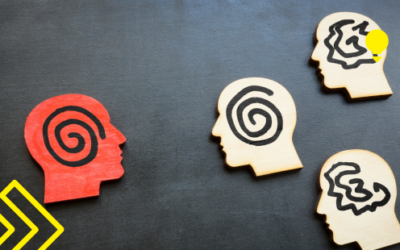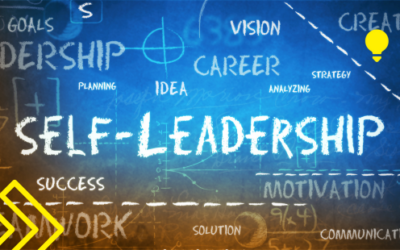6 November 2023

I. Introduction
In a world defined by constant change and innovation, creativity has emerged as a powerful driving force, not just in our professional endeavors but also in our personal lives. It’s the spark that ignites fresh ideas, innovative solutions, and novel approaches to both challenges and opportunities. In this blog post, we’ll delve into the fascinating realm of creativity, exploring its profound significance and sharing valuable insights on how to cultivate it effectively.
Creativity is more than just a buzzword; it’s a cornerstone of success and fulfillment. Whether you’re striving to excel in your career or seeking personal growth and happiness, creativity plays a pivotal role. It empowers individuals and organizations to push boundaries, break free from the ordinary, and reach new heights of achievement.
But what exactly is creativity, and why is it so crucial in the modern world? Creativity isn’t limited to artistic endeavors or imaginative thinking; it’s a multifaceted concept that permeates every aspect of our lives. It encompasses the ability to connect disparate ideas, find innovative solutions, and envision a future yet to be realized. In today’s fast-paced, dynamic landscape, creativity is the driving force behind problem-solving, entrepreneurship, and progress.
In the following sections, we’ll take a closer look at the importance of creativity, both in the professional and personal spheres. We’ll explore what creativity truly means and how it influences our daily lives. Additionally, we’ll delve into the transformative power of rediscovering one’s creative spark, offering practical tips and tools to help you unlock your creative potential. So, join me on this journey as we uncover the secrets to unleashing your creative genius and enhancing your work and personal life in the process.
II. The Importance of Creativity
A. Creativity in Work
In the realm of work, creativity is not merely an optional trait but an essential ingredient for success. It permeates various aspects of professional life, enriching individuals and organizations alike.
1. Enhancing Problem-Solving Skills
Creativity is the driving force behind effective problem-solving. When faced with complex challenges, creative individuals have a unique ability to approach issues from unconventional angles, offering fresh perspectives and innovative solutions. This skill is invaluable in today’s ever-evolving business landscape, where adaptability and creative problem-solving are key to overcoming obstacles and seizing opportunities.
2. Driving Innovation and Competitive Advantage
Innovation is the lifeblood of progress and success in today’s competitive world. Creativity serves as the catalyst for innovation, allowing individuals and organizations to develop groundbreaking products, services, and processes. Companies that foster a culture of creativity are better positioned to stay ahead of the curve, adapt to changing market conditions, and maintain a distinct competitive advantage.
3. Fostering a Dynamic and Engaging Work Environment
Creativity doesn’t just benefit individuals; it also transforms workplaces into dynamic and engaging environments. When employees are encouraged to express their creative ideas and contributions are valued, it cultivates a positive and innovative workplace culture. This, in turn, boosts morale, fosters collaboration, and attracts top talent to the organization.
In summary, creativity in the workplace is a catalyst for problem-solving, innovation, and a vibrant work culture. Its impact extends far beyond the individual, creating a ripple effect that benefits organizations and society as a whole. In the next section, we’ll explore how creativity extends beyond the workplace, enriching our personal lives and well-being.
III. What Creativity Means
Now that we’ve explored the pivotal role of creativity in both work and personal life, it’s essential to delve deeper into what creativity truly means and how it operates. Understanding the nature of creativity is the first step toward harnessing its power effectively.
A. Defining Creativity
1. Creativity as a Mindset
Creativity is not limited to artistic endeavors or a specific skill set. It’s a mindset—a way of thinking that involves breaking free from conventional boundaries and embracing the unknown. Creative individuals possess a unique willingness to explore, take risks, and challenge the status quo. They view problems as opportunities and are unafraid of failure, understanding that it often paves the way for innovation.
2. Distinguishing between Creativity and Talent
It’s crucial to differentiate between creativity and talent. While talent represents innate abilities and skills, creativity is a skill that can be developed and nurtured. You don’t need to be an artist or musician to be creative; creativity can manifest in countless forms, from designing a new product to finding novel solutions to everyday problems.
3. The Role of Divergent Thinking
Divergent thinking is a cornerstone of creativity. It involves generating a multitude of ideas and possibilities, often by exploring unconventional connections between concepts. Unlike convergent thinking, which focuses on finding a single correct solution, divergent thinking encourages exploration, imagination, and brainstorming. It’s the fertile soil from which creativity sprouts.
B. The Creative Process
Understanding the creative process is essential for anyone seeking to foster creativity effectively. This process typically unfolds in several stages:
1. Inspiration and Ideation
Creativity often begins with a spark of inspiration—a moment when something captures your attention and triggers your curiosity. Ideation follows, where you generate ideas, associations, and possibilities related to that inspiration. This phase involves free thinking, brainstorming, and exploring diverse perspectives.
2. Development and Refinement
Once you have a pool of ideas, the next step is to develop and refine them. This involves evaluating the feasibility and potential of each idea, shaping them into more concrete concepts, and honing in on the most promising ones. It’s a process that requires patience, iteration, and a willingness to adapt.
3. Implementation and Evaluation
The final phase of the creative process involves putting your ideas into action. This might mean creating a work of art, launching a new business venture, or implementing a novel solution to a problem. As you execute your creative endeavors, it’s crucial to continually evaluate their success, learn from both successes and failures, and refine your approach over time.
Understanding creativity as a mindset and appreciating the creative process is the foundation upon which you can build your own creative journey. In the upcoming sections, we’ll explore the transformative power of rediscovering your creativity and provide you with practical tips and tools to unleash your creative potential.
IV. The Impact of Rediscovering Creativity
Rediscovering creativity can be a transformative experience, breaking down barriers and reigniting the creative spark within. In this section, we’ll explore the profound impact of rediscovering creativity and provide valuable insights into overcoming creative blocks.
A. Overcoming Creative Blocks
1. Common Obstacles to Creativity
Creative blocks are a natural part of the creative process, but they can be frustrating and discouraging. Some common obstacles to creativity include self-doubt, fear of failure, perfectionism, and a lack of inspiration. These barriers can stifle creativity and leave individuals feeling stuck.
2. Strategies for Overcoming Creative Blocks
Fortunately, there are strategies to overcome these obstacles and reignite your creative spirit:
- Mindfulness and relaxation techniques: Clearing your mind through meditation or deep breathing exercises can alleviate anxiety and open the door to creativity.
- Diverse experiences: Seeking out new experiences, whether through travel, reading, or exploration, can provide fresh perspectives and stimulate creativity.
- Collaboration: Engaging with others who share your interests or challenges can bring new ideas and solutions to the table.
- Setting achievable goals: Breaking your creative projects into smaller, manageable tasks can make the creative process feel less daunting.
- Embracing failure: Recognize that failure is a natural part of the creative journey. It’s an opportunity to learn and grow, leading to even greater creativity in the long run.
B. Rediscovering Creativity: Real-Life Stories
1. Personal Anecdotes of Individuals Who Reignited Their Creativity
Sometimes, rediscovering creativity is a deeply personal and transformative experience. Many individuals have inspiring stories to share about how they overcame creative blocks and reignited their passion for creativity. These stories serve as a reminder that it’s never too late to embrace your creative side.
2. The Transformative Power of Rediscovery
The act of rediscovering one’s creativity can have a profound impact, not only on the individual but also on their work and personal life. It can lead to increased self-confidence, a sense of purpose, and a newfound enthusiasm for tackling challenges. By unlocking your creative potential, you open the door to a world of possibilities and personal growth.
In the following section, we’ll provide you with practical tips and tools to help you nurture and sustain your creative journey, allowing you to fully harness the power of creativity in both your work and personal life.
V. Tips for Fostering Creativity
Fostering creativity is an ongoing journey, and it’s something that anyone can cultivate and develop. In this section, we’ll provide you with a comprehensive set of tips and tools to help you unlock your creative potential in both your work and personal life.
A. Cultivating a Creative Mindset
1. Embracing Curiosity and Open-Mindedness
Curiosity is the foundation of creativity. Cultivate your curiosity by asking questions, seeking out new experiences, and exploring unfamiliar territories. Embrace open-mindedness by being receptive to different perspectives and ideas, even if they challenge your existing beliefs.
2. Encouraging Risk-Taking and Learning from Failures
Creativity often requires stepping outside your comfort zone and taking risks. Don’t be afraid of failure; instead, view it as a valuable learning opportunity. Some of the most innovative ideas are born from a willingness to try, fail, and iterate.
3. Practicing Mindfulness and Presence
Mindfulness techniques, such as meditation and deep breathing, can help calm your mind and enhance your ability to focus. Being present in the moment allows you to fully engage with your creative endeavors without distraction, helping you discover new insights and connections.
B. Nurturing Creative Habits
1. Setting Aside Dedicated Creative Time
Schedule regular, uninterrupted time for creative activities. Consistency is key to nurturing your creative skills. Whether it’s 30 minutes a day or a dedicated block of time each week, prioritize creativity in your schedule.
2. Surrounding Yourself with Inspiration
Create an environment that sparks your creativity. Surround yourself with inspiring art, literature, music, or nature. These stimuli can trigger your imagination and serve as sources of inspiration for your creative pursuits.
3. Collaborating and Seeking Feedback
Collaboration can be a powerful catalyst for creativity. Engage with others who share your interests or challenges. Exchange ideas, brainstorm together, and seek constructive feedback. Collaborative efforts often lead to unique and innovative solutions.
C. Utilizing Tools and Resources
1. Digital Tools and Apps for Creative Endeavors
Explore a wide range of digital tools and apps designed to enhance creativity. From graphic design software to brainstorming apps and virtual collaboration platforms, these tools can streamline your creative process and help you bring your ideas to life.
2. Creative Workshops and Courses
Consider enrolling in creative workshops or courses. These can provide structured guidance, expose you to new techniques, and connect you with a community of like-minded individuals who share your creative interests.
3. Building a Creative Support Network
Surround yourself with a supportive network of creative individuals. Share your progress, ideas, and challenges with them. They can offer encouragement, feedback, and fresh perspectives, enhancing your creative journey.
By embracing a creative mindset, nurturing creative habits, and utilizing available tools and resources, you can unlock your creative potential and integrate it seamlessly into both your work and personal life. Creativity is not a finite resource; it’s a boundless wellspring of innovation waiting to be tapped into.
VI. Conclusion
In a world characterized by change, innovation, and limitless possibilities, creativity stands as a beacon of opportunity. Throughout this journey, we’ve uncovered the profound importance of creativity in both work and personal life. It’s a force that enhances problem-solving skills, drives innovation, and transforms workplaces into dynamic and engaging environments. In our personal lives, creativity offers a path to self-expression, stress relief, and the strengthening of meaningful relationships.
We’ve delved into what creativity truly means—a mindset that embraces curiosity, open-mindedness, and divergent thinking. We’ve explored the creative process, from inspiration to implementation, and learned that creativity is not confined to a select few but is accessible to anyone willing to embark on the journey.
Rediscovering creativity is an empowering experience, one that allows you to break free from creative blocks and reignite your passion for innovation. The stories of those who have walked this path remind us that it’s never too late to embrace our creative potential.
As we wrap up this guide, I leave you with the knowledge and tools to foster your creativity. Cultivate a creative mindset, nurture creative habits, and leverage the abundance of tools and resources at your disposal. With these, you can unlock your creative genius and integrate it seamlessly into every facet of your life.
Creativity is not a destination; it’s a lifelong journey. Embrace it, nurture it, and allow it to lead you to new horizons. In doing so, you’ll not only enrich your own existence but contribute to a world that thrives on the innovative spirit of creative minds. Embrace your creative genius and watch as it transforms your work and personal life in ways you never thought possible.
Cheers.
Related Articles
Curiosity: The Superpower for Career Success and Purpose
Unleash the superpower of curiosity to propel your career and discover your purpose. Dive into the transformative journey of exploration, learning, and growth. Embrace curiosity as your compass, guiding you towards fulfillment and success in a rapidly evolving world.
Sympathy vs. Empathy vs. Compassion: What is the Difference?
Delve into the nuances of sympathy, empathy, and compassion—the cornerstones of human connection. Learn to understand, relate, and act with kindness towards others’ experiences. Explore practical ways to cultivate these qualities in your interactions, fostering deeper connections.
Mastering Self-Leadership: Empowering Yourself for Success
Embark on a journey of self-mastery with our guide on self-leadership. Unlock the keys to personal empowerment, resilience, and success as you navigate the complexities of modern life. Discover practical tips to cultivate self-awareness, set goals, and thrive in any endeavor.





https://t.me/s/Online_1_xbet/1244
https://t.me/s/Gaming_1xbet
https://t.me/ud_Gizbo/46
https://t.me/s/top_kazino_z
https://t.me/da_1xbet/14
Как отыграть бонусы в 1win — начните играть в онлайн-казино или делайте ставки на спорт с минимальным депозитом всего от 300 рублей и получайте до 150% бонусов за первый пополнения. Используйте промокод для фриспинов и кэшбэка, делайте лайв-ставки с высокими коэффициентами, выигрывайте реальные деньги и быстро выводите деньги в личном кабинете — всё доступно круглосуточно, благодаря мгновенным выплатам и простоте регистрации.
Как поставить бонусы на спорт в 1win — начинайте прямо сейчас и увеличьте свой выигрыш! Ведите ставки на спорт и лайв-ставки с высокими коэффициентами, получите бонусы за депозит до 100%, пользуйтесь промокодами, быстрому выводу средств и кэшбэкам до 15%, а также совершайте ставки в онлайн казино или на слоты — всё это доступно круглосуточно, с минимальным депозитом и простым личным кабинетом.
Форд Фокус 1 2005 года где вин номер — это не проблема, ведь с 1win у вас есть доступ к лучшим бонусам и длинному списку развлечений! Делайте ставки на спорт с высокими коэффициентами, участвуйте в лайв-ставках, выигрывайте до 1000% от депозита, получайте фриспины и кэшбэк до 15%, а быстрый вывод и круглосуточная поддержка делают игру максимально удобной. Простая регистрация, минимальный депозит — и вы уже на шаг ближе к реальному выигрышу!
Какое вино можно при сахарном диабете 1 типа? Сделайте ставку на уникальный ассортимент 1win — онлайн казино с быстрым выводом, бонусами за депозит до 5000 ? и фриспинами до 200. Наслаждайтесь лайв-ставками на спорт, высокими коэффициентами и реальным выигрышем, а также получайте кэшбэк до 10%, легкую регистрацию и возможность играть в слоты круглосуточно — всё в вашем личном кабинете!
Thanks for sharing. I read many of your blog posts, cool, your blog is very good. https://accounts.binance.com/ka-GE/register-person?ref=ILE8IH9H
https://t.me/s/Beefcasino_officials
https://t.me/s/Martin_casino_officials